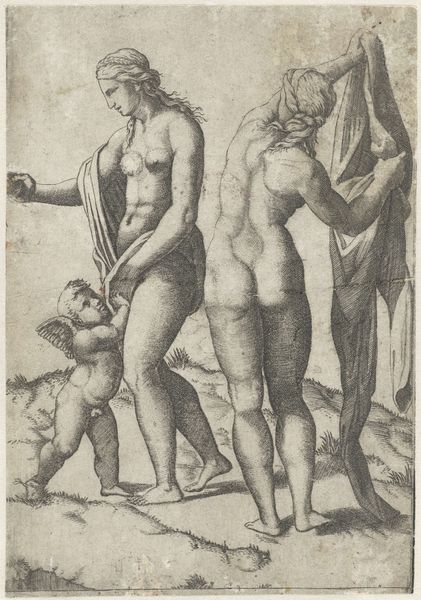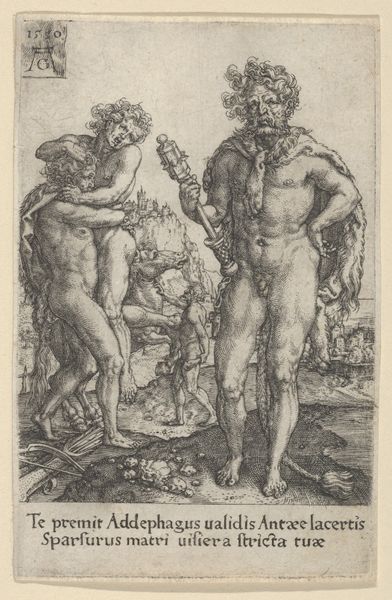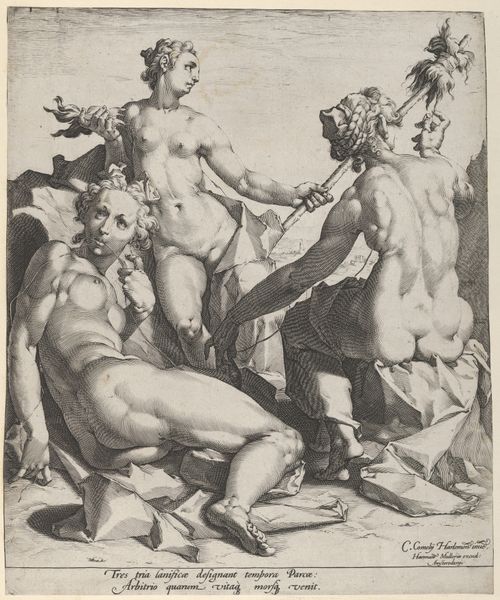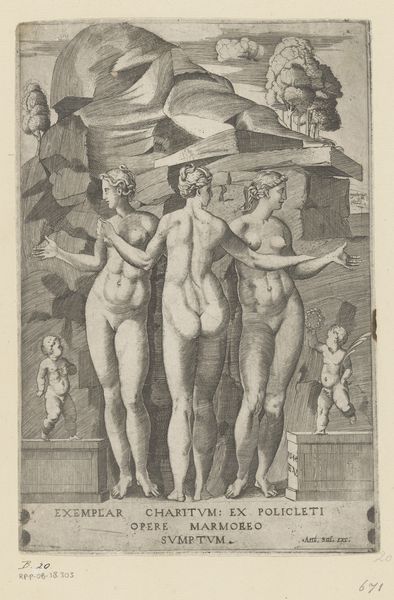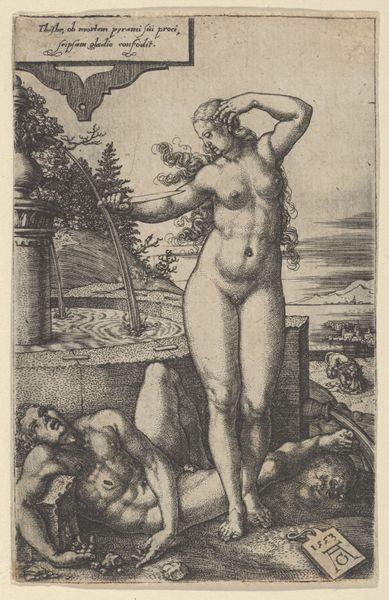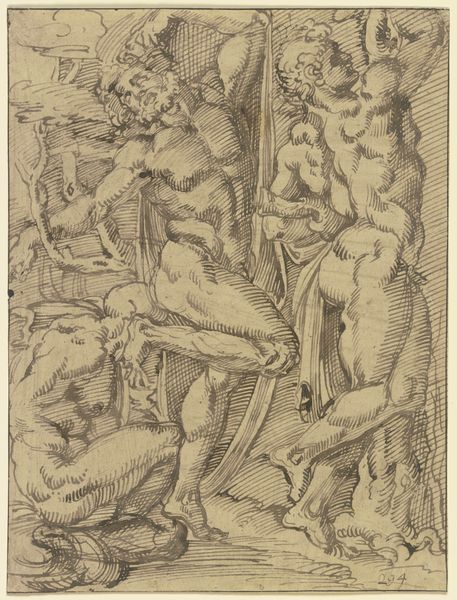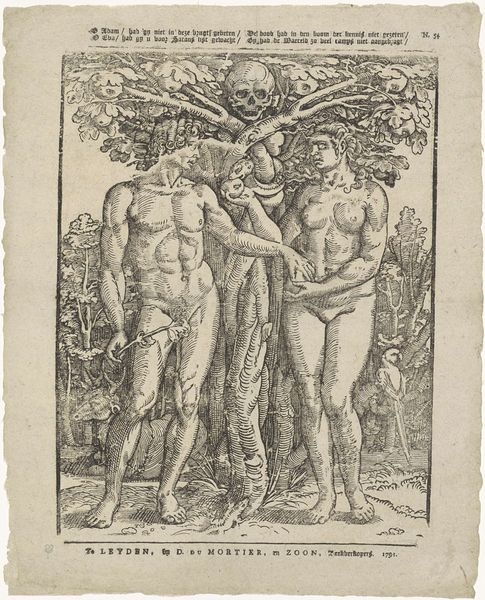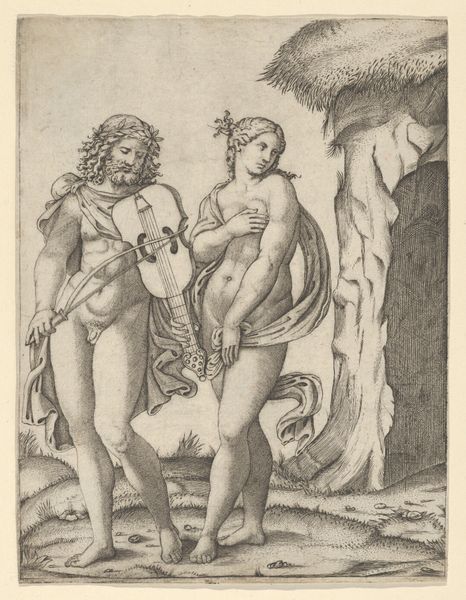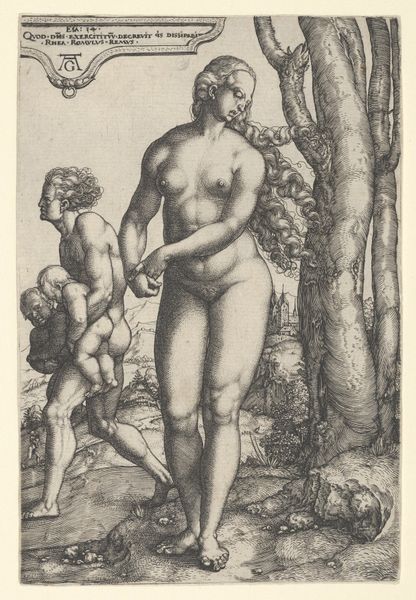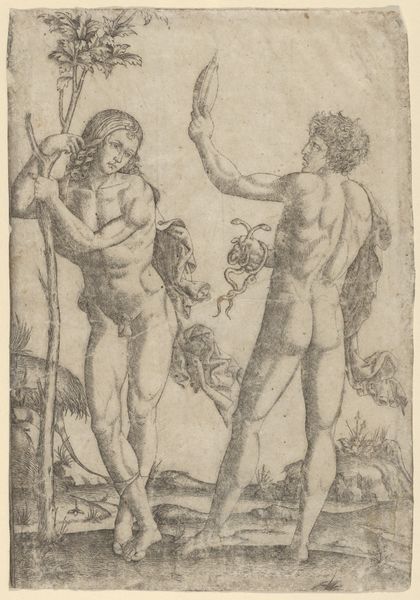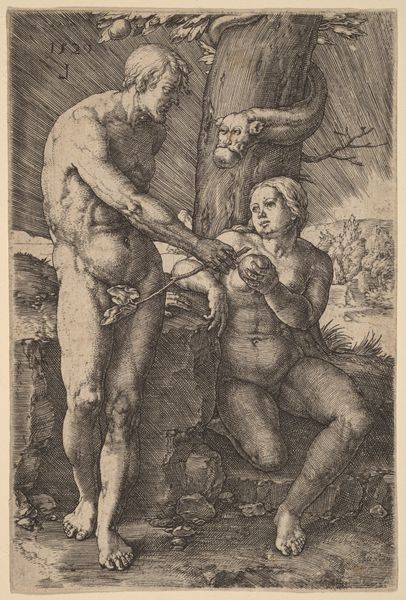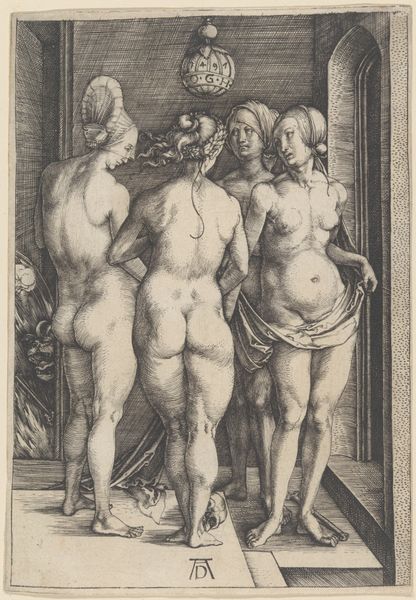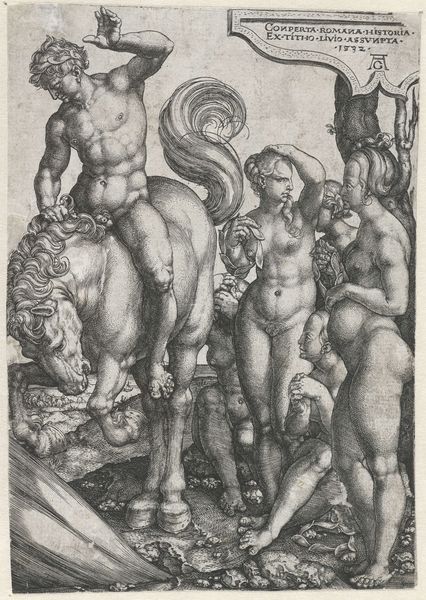
drawing, print, engraving
#
drawing
# print
#
figuration
#
history-painting
#
italian-renaissance
#
nude
#
engraving
Dimensions: Sheet: 3 1/8 in. × 2 in. (7.9 × 5.1 cm)
Copyright: Public Domain
Curator: What an arresting image, wouldn’t you agree? We are looking at a reverse copy of “Apollo and Daphne,” an engraving, a print made sometime between 1515 and 1600. Editor: Absolutely. My first impression is the sheer physicality, the palpable tension of the figures rendered with such strong lines and textures. The engraver is interested in how those bodies interact with nature, I see the way their feet literally root into the earth! Curator: Right, Barthel Beham's representation freezes this crucial moment from Ovid's Metamorphoses. We have the scene of Daphne's transformation to escape Apollo, an important representation of bodily autonomy in mythology that’s still in conversation with contemporary discourses on identity. Editor: You know, speaking of Beham, let’s not forget his workshop's access to specific materials. What kind of metals allowed this level of precision? How were those plates treated, prepared, and printed to create the multitude of impressions? Those decisions impacted not only availability, but how this story could travel and influence people. Curator: That's so insightful. I’m also thinking about Daphne’s expression as she becomes one with the laurel tree: resistance and a reaching back toward her autonomy—such interesting intersections between power and female agency. Beham uses line work masterfully, I believe, creating areas of both incredible detail, such as the texture of bark, contrasted with open spaces. Editor: And observe Apollo’s posture, his grasping gesture and twisted body – a pose that screams labor. I want to think about that printmaking labor that makes the myth itself an artifact produced for consumption and its impact on that society’s view on female virtue. How did the engraving influence concepts of gender and nature? Curator: I think focusing on labor allows us to reassess some assumptions about whose perspective is prioritized here. By exploring themes that intersect identity, politics, and cultural expectation, we open avenues to understanding the work anew. Editor: Indeed. Paying close attention to the making reveals not just the story itself, but also the hands that shaped it. Examining material and process tells the social story of its production. Curator: By understanding this artwork through intersectional lenses, it transcends mere illustration; it speaks to contemporary discussions on personal liberation and societal constraint. Editor: And through materiality and the social contexts of printmaking, the themes embedded in Apollo and Daphne become tangible products of historical conditions, making us realize what’s at stake and prompting critical engagement.
Comments
No comments
Be the first to comment and join the conversation on the ultimate creative platform.
